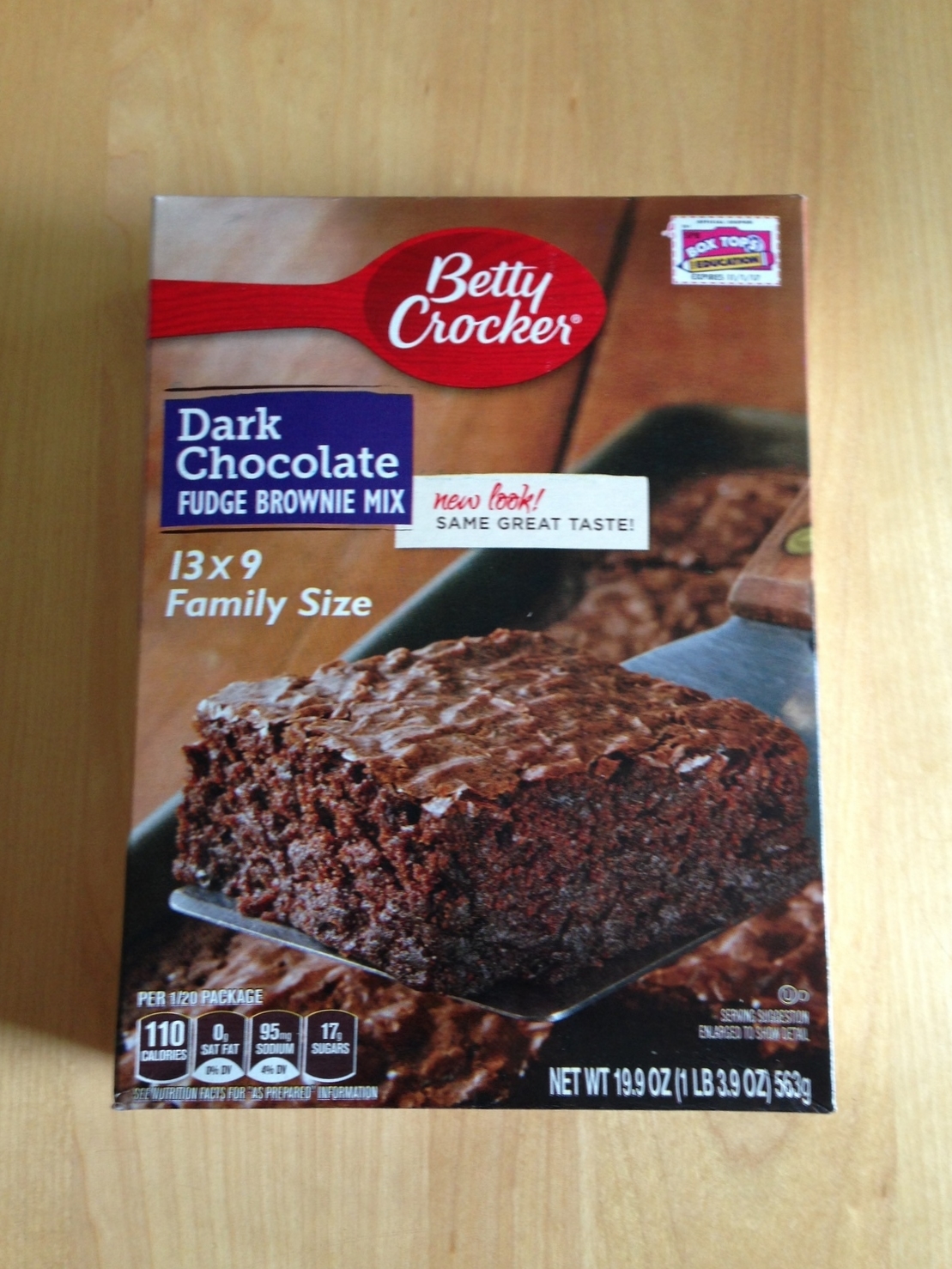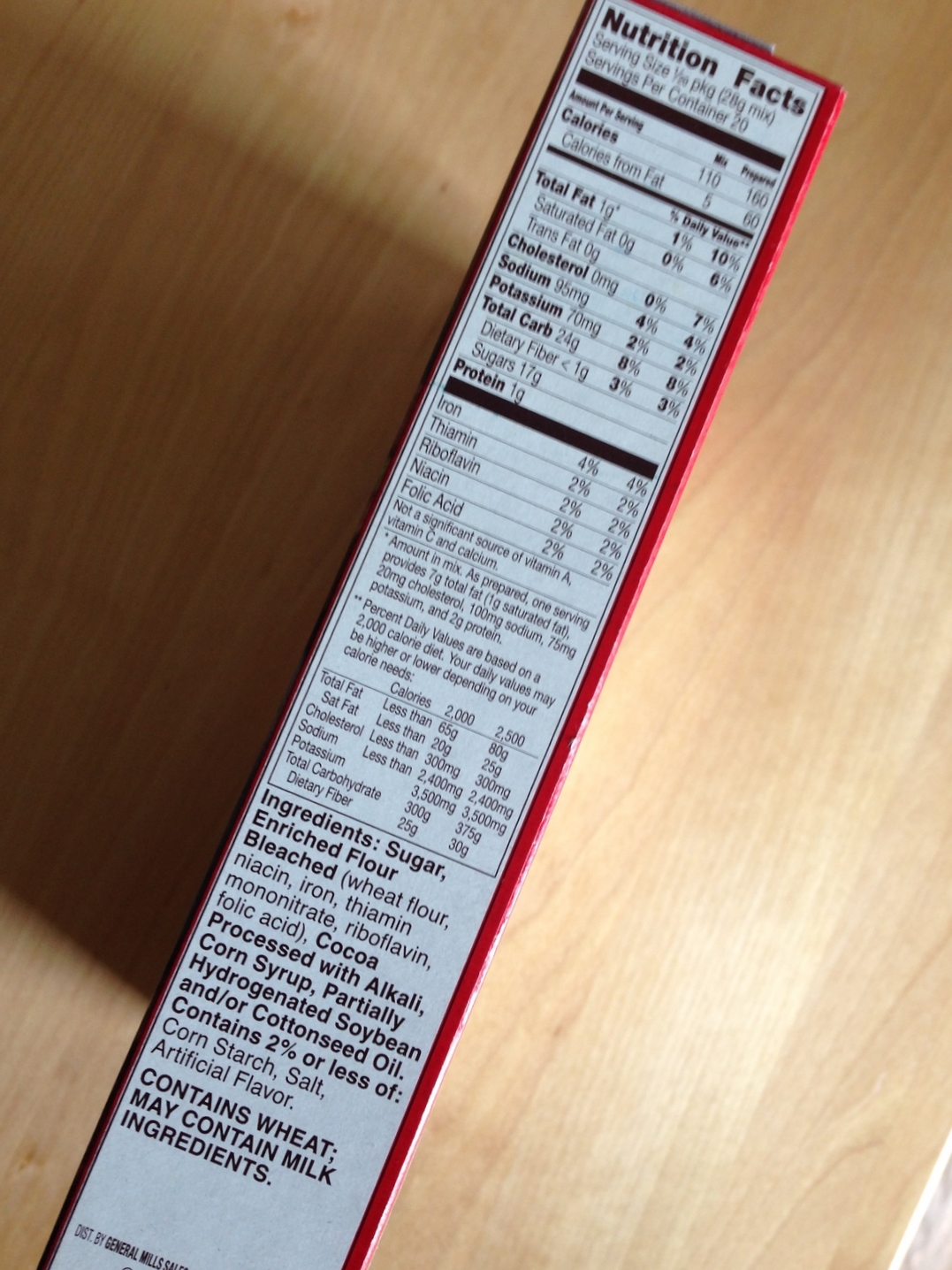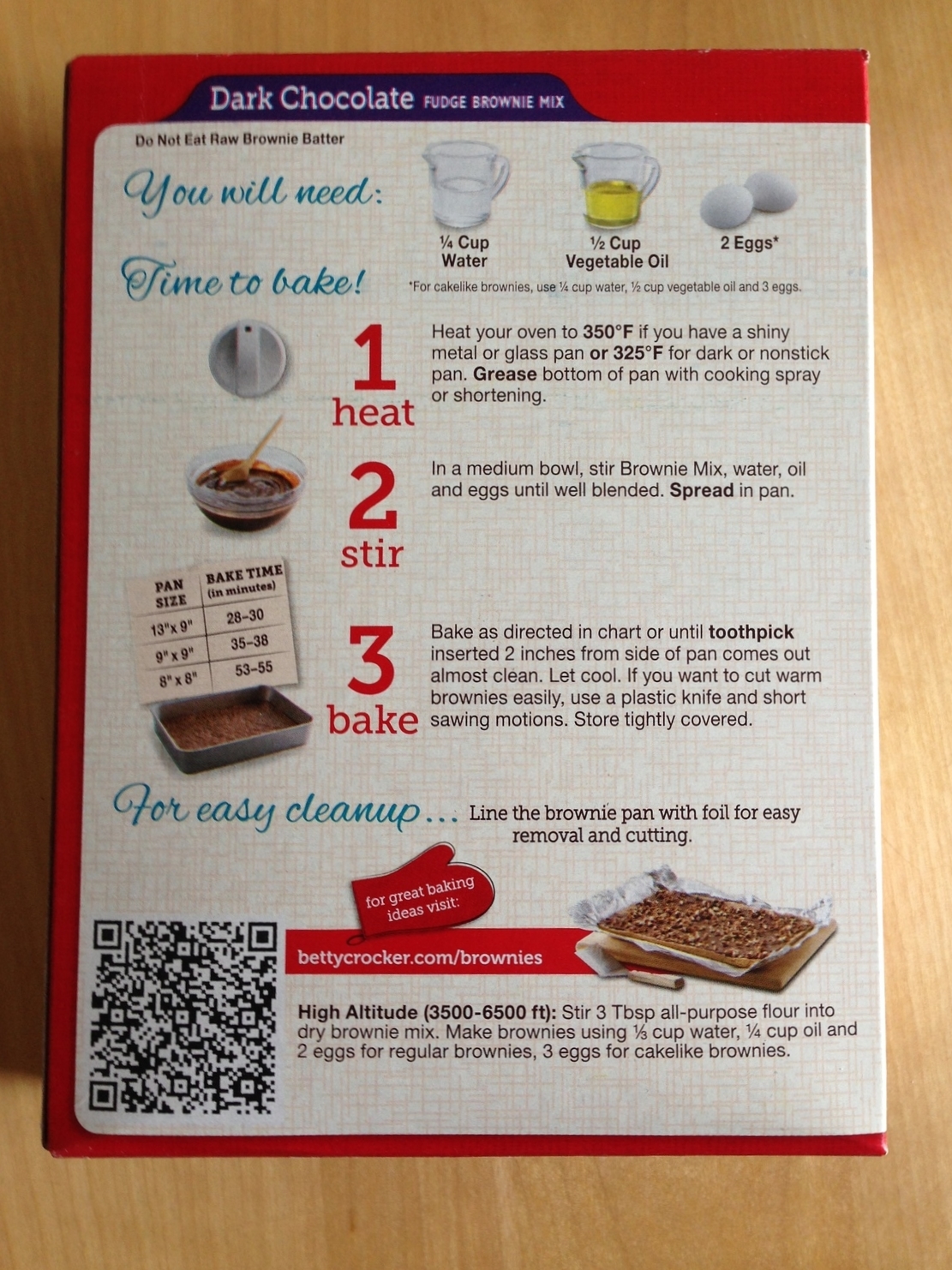A Recipe for Success
Bringing your classroom into the kitchen is one way to give real life purpose to reading while rewarding children for a job well done as they enjoy the fruits of their labor - or in this case the brownies of their labor. This week's Winsome Ways post builds on the concept of "integrated instruction". In other words, how many academic disciplines can be interwoven into one lesson - particularly when that lesson involves real world, hands-on activities? So while the oven is preheating, let's take a look.
What you will need:
- A packaged food item that requires following a simple recipe - you can make something "from scratch", but you will miss having much of the nutritional information that is on a boxed recipe.
- Additional ingredients that must be added to those in the package
- The necessary cooking utensils, cookware, and appliances
What to do:
- Carefully look over all sides of the boxed item noting math concepts, directions, nutrition information, etc.
- Jot down concepts that can be taught under various academic headings
Here's an example of connections appropriate to a 3rd-6th grader (and, depending on the child's needs, some that can modified for younger or older) that could be drawn from this boxed brownie recipe:
Reading
- Following directions
- Identifying abbreviations
- Vocabulary
- Basic comprehension
- Reading a chart and applying its information (nutrition label)
- Culminating activity to a story that has been read - Ex: If reading Farmer Boy, you may like to make some of the items from one of Almonzo's huge breakfasts.
Math
- Vocabulary and Abbreviations
- Gram (g), milligram (mg), percent (%), less than (<), inch ("), feet (ft.), tablespoon (Tbsp), ounce (oz.), pound (lb.)
- Measurement
- Point out 13x9 to the child (front of box). Look at different pans in your kitchen. Ask the child which pan he/she thinks might be 13x9 (explain this is inches). Use a ruler to check and select the proper pan. Also take this opportunity to review the other pan sizes (back of box). Can your child find pans this size in your kitchen? Can your child sketch out pans of this size? Relate this to geometry - is this pan a rectangle, a square, etc.?
- Underscore the ounces only weight as compared to the pounds and ounces weight. Review 16 ounces to a pound.
- Conversion of grams to milligrams and visa versa.
- Note the English to metric weight conversions. If the child is old enough to explore this further, investigate conversion calculators online and even practice making some conversions using pencil and paper.
- Discuss the calorie as a concept of measurement.
- Discuss Fahrenheit temperatures. Have the child set the oven temperature. Use an online temperature converter to find out what the Centigrade equivalent would be.
- Have the child actually perform the measuring using kitchen utensils and/or a kitchen scale used to weigh things.
- Have the child set the timer. Can he convert minutes to hours and visa versa?
- Multiplication/Division Facts
- Manipulating the factor pairs that could possibly be used when cutting the brownies to serve x number of people
- Fractions
- Understanding 1/2, 1/3, 1/4 as well as mixed number 1 1/2 (these are all used on the box) when measuring
- Using fraction concepts when cutting the brownies (and for some, making a connection here to decimal parts and/or percent)
- Noticing and experimenting with the fact that when you want to feed more people, you need to cut the whole pan into more pieces which makes the brownies smaller (pointing out that as the denominator gets larger, the pieces get smaller - thus comparing fractions)
- Math Reasoning
- Ordinal numbers (1st, 2nd, 3rd)
- Think and discuss - If you use a larger pan, will the brownies be thicker or thinner than when baked in a small pan? Test and analyze why this is so.
- How much of each ingredient would you need to double or triple the number of servings? Can you halve it?
- Comparing number values
Science
- Chemical reactions
- Mixtures
- States of matter (solid, liquid, gas)
- Analyze why a high altitude might require different directions.
- Explore why different size pans necessitate different cook times.
- Explain why a shiny pan needs a different heat setting than a dark pan.
- Vocabulary
Nutrition
- How does this fit into a food pyramid?
- What is a serving size? Is it always the same?
- How many calories does a person need (adjusted for age, etc.)
- Vocabulary - cholesterol, sodium, potassium, carbohydrates, protein, fiber, iron, thiamin, riboflavin, etc. What affect do these have on the body?
- Daily nutritional values including calories
Social Skills/Oral Communication/Manners
- Modeling and developing question/answer format in conversation (as you prepare and later as you enjoy)
- Role play how to politely offer and serve food to guests (you can get as elaborate here as the age and/or needs of the child dictate)
- Role play being a polite guest (taking the first brownie you touch, please and thank you, napkin on lap, etc. - again dependent on child's age/needs)
- Modeling and practicing polite conversation as you enjoy your treat
Life Skills
- Planning ahead and organizing the activity (this could start at the grocery store)
- Safety in the kitchen including cleanliness (with appliances, utensils, raw eggs, washing hands, cleaning up, etc.)
- How to read a recipe
- How to properly use ingredients and utensils
- Preheating an oven (throw in the meaning of the prefix "pre" here, too!)
- Measuring cups at eye level
- Using a straight edge to level off a measuring spoon
- Cracking an egg
- Greasing or lining the brownie pan
- Allowing the brownies to thoroughly cool before cutting (and planning ahead to allow sufficient time for this)
Seems limitless, doesn't it?
Obviously, you wouldn't want or need to hit all of these items in one setting, and particularly with a special needs child, you may want to focus on one section at a time. I have only listed many ideas in order to illustrate the possibilities such an activity affords. Not all the lessons are suitable for all children, and you'll notice that some, such as those under communication and life skills, might be great for children who are young or developmentally delayed.
Now, what have I missed? I'd love to hear your take on an integrated cooking lesson such as this - truly an opportunity for creating a recipe for success in your child's life! Please leave me a comment!


